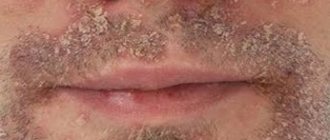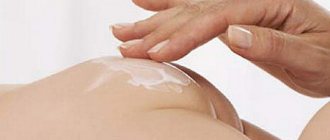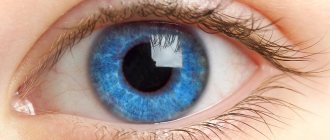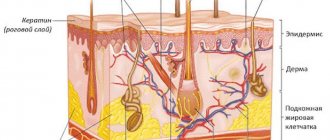Usually, an adult is not in a big hurry to go to a medical facility if any health problems arise, especially if we are talking about rashes. As a rule, everything is attributed to poor ecology or severe fatigue, poor nutrition. If crusts, cracks or redness appear behind the ears, then the person tries to monitor hygiene more carefully. But cracks behind the auricle can appear against the background of serious pathological processes. Therefore, if a crack appears behind the ear, you should immediately contact a dermatologist, who will conduct the necessary tests and make a diagnosis, because there are many reasons for this condition.
Possible and fairly quickly eliminated causes
First of all, we should not forget about personal hygiene in any area of the body. It is necessary to clean not only the area behind the ears, but also regularly remove wax from the ear.
Another common cause is a lack of vitamins. The lack of vitamins and nutrients is especially acute in winter; the skin becomes dry and may crack over time. In light of this, it is necessary to adjust your diet and take vitamin and mineral complexes.
Dry skin is another cause of cracks behind the ears. The only problem in such cases is that the body lacks moisture. This may be due to an excessively dry climate in the place where a person lives or poor nutrition or insufficient water intake into the body. Depending on the suspected cause of dry skin, treatment is prescribed; you may only need to drink more water and moisturize the area around the ears.
For the same reason, or after suffering an infectious disease, the body’s immune forces may weaken, which often leads to problems with the skin.
Stress is also a fairly common cause. As you know, all problems are caused by nerves, and the skin is no exception.
Cracks behind the ear can appear due to hormonal imbalance, and most often this occurs during gestation. Although such failures can occur in people of any gender and age, for example, while taking certain medications.
Another cause is heat urticaria. Inflammation behind the ear occurs due to blockage of the sweat glands. In parallel with this, severe itching, redness appears, peeling begins and a crust appears behind the sink. Most likely, no special treatment will be required, you will simply have to learn how to properly use moisturizers and control the process of sweating.
However, the reasons can be much more serious and require immediate attention and qualified medical care.
Causes of peeling and wet ears
First, you should consider the reasons why the skin behind the ears peels in adults, external in nature, associated with poor lifestyle, hygiene or diet. To get rid of the problem, it will be enough to adjust these aspects of your life.
Neglect of hygiene procedures or, conversely, too frequent cleansing. The ears should be periodically cleaned of wax and the auricle rinsed, otherwise inflammation and irritation will appear in the ear area. But you shouldn’t overdo it, since too frequent and diligent cleaning causes damage to the skin and the appearance of wounds, which is accompanied by a burning sensation.
Avitaminosis. A lack of vitamins causes dry skin, peeling, and possibly cracking of the skin until it bleeds. The lack of nutrients is especially acute in winter, but if the diet is unbalanced, then the problem can manifest itself at any time.
Stress. They cause problems with hormonal levels, which causes skin rashes and disturbs the moisture balance.
Decreased immunity. Low immunity can occur after a recent illness, and the weakness of the body’s defense system leads to infection penetration into microdamages of the skin, the appearance of weeping or flaking areas.
Allergy. It is not always possible to immediately determine what causes the reaction. This disease causes skin contact with materials from earrings, headphones, hats, shampoos and other hair care products.
Hormonal disbalance. A special case when the failure is caused by stress is indicated above. However, imbalance of hormones is caused, in addition to stress, by pregnancy and taking medications. All this leads to the appearance of skin rashes and peeling.
Now it is necessary to identify the pathological reasons due to which the areas of skin behind the ear in an adult peel and become wet; in such cases, targeted treatment will be required.
Dermatitis or eczema. These diseases are of an allergic or hormonal nature. Moreover, the rash caused by dermatitis is often localized in the ear, closer to the ear canal, and eczema is behind and around the ears. In the first case, the rash consists of small papules with serous fluid. After they are damaged, the area behind the ear becomes wet and then crusts over. The whole process is accompanied by swelling. Antiallergic therapy is prescribed.
Eczema itches very much. The first sign of a rash is itching, then the skin turns red, small papules filled with liquid appear on it, when scratched they are damaged, the skin first gets wet and then dries out, cracks, and new foci of the rash appear nearby. Eczema is treated with anti-inflammatory ointments. Hormonal drugs have a good effect, but they are used only as prescribed by a doctor. To prevent the development of a fungal infection, use an alcohol antiseptic to treat wet areas. If the skin, on the contrary, dries out, ointments or creams are needed.
Important! For eczema, it is important to start treatment at the initial stage, otherwise you will then have to resort to strong hormonal drugs.
Fungus. Fungi are always present on human skin, however, conditions must be created for their pathological reproduction:
- reduced immunity;
- neglect of hygiene rules;
- Washing too often, which causes the natural protective lubricant to be washed away.
Symptoms:
- itching;
- discharge from the ear canal;
- noise in ears.
Fungal infections are treated with topical antifungals and antihistamines.
Scrofula. The causative agent is Koch's bacillus. This is the bacterium that causes tuberculosis. The most common reason for the development of the disease is weakened immunity. Also identified are bad habits, hereditary factors, and hormonal imbalance.
The main symptom is yellow, dry crusts that form behind and around the ears. Under the crusts, inflamed red skin is found, the exposed areas become wet. Since tuberculosis is a systemic disease, there are other characteristic symptoms that affect the entire body:
- low-grade fever;
- weakness;
- inflammation of the submandibular lymph nodes;
- weight loss.
Symptomatic treatment includes the use of antibiotic ointments and anti-inflammatory drugs.
Seborrheic dermatitis. Refers to a fungal infection and is caused by fungi of the Malassezia genus. A typical location is the scalp, as well as areas behind the ears. The disease manifests itself as crusty, abundant white or yellowish dandruff. Treatment is specific and complex.
Psoriasis. Red plaques, covered with scales, appear above the surface of the skin. The disease is autoimmune in nature and cannot be completely cured. Treatment is steroid ointments.
Folliculitis. It occurs due to inflammation of the hair follicle and is characterized by the appearance of a red rash. When the blisters are damaged, purulent contents leak out and bake into a crust. Treatment with antibiotics or antimycotic drugs is prescribed.
Heat urticaria. It occurs due to blockage of the sweat glands and is accompanied by itching, flaking, redness, and crusting on the skin. Sweating must be controlled.
In addition, there are other diseases that cause the appearance of weeping areas and peeling behind the ears:
- diabetes;
- liver dysfunction;
- otitis.
In the cases listed above, complete recovery will be ensured only by therapy aimed at treating the underlying disease.
Eczema
This pathology can appear at any age and in any person, on any part of the body. Contact dermatitis is just a type of eczema that appears upon contact with an allergen or a specific irritant. In this case, cracks behind the ear may occur after using shampoos, dyes or other cosmetics for skin and hair care. Blisters or rashes may appear first, and then cracks. This condition is characterized by a strong tooth and redness in the area of irritation.
Ointments for irritation in these types of dermatitis are prescribed, usually with an antihistamine effect and salicylic acid. The doctor may also recommend using shampoos and hair care products containing zinc pyrithione and selenium. In severe cases of dermatitis, antibacterial agents may be prescribed for oral administration.
How to prevent it
If the skin behind the ears of adults peels and becomes wet not due to a fungal or hormonal disease, then establishing proper nutrition and a healthy lifestyle will help prevent the development of the problem and get rid of a weeping ear. This includes:
- long night sleep;
- daily walks;
- inclusion of fruits and vegetables, fermented milk products in the diet.
If the skin behind the ear peels and cracks after contact with any materials or products, you must avoid contact with the allergen, and if a food allergy manifests itself in this way, you need to avoid the corresponding products, and the peeling will go away on its own.
Idiopathic form
There is also such a thing as weeping eczema behind the ears and on other parts of the body. Although this is not a scientific name at all, this rash is actually called idiopathic eczema. A characteristic feature of the disease is blisters that burst over time, and serous fluid appears in these places.
This type of rash is quite difficult to treat. In this case, the inflammatory process can end on its own, but with an obligatory aggravation in the near future. In fact, this pathology is a chronic disease, but not contagious. In the fight against the rash, the patient must have great patience; he will have to eliminate all irritating factors from his life, reconsider his diet, and never scratch the rash in order to prevent a secondary inflammatory process.
Dermatitis
Problems with the ears can occur due to the development of exudative dermatitis. Dermatitis itself can take two forms: chronic and acute. A rash with this pathology can appear on any part of the body. Clinical picture: ulcers, papules, pimples, plaques, etc. Patients suffer from severe itching, redness and rashes, peeling and exudative discharge.
When making a diagnosis, the doctor first determines the cause of dermatitis. The patient will have to give up all foods that can cause a rash, these usually include: citrus fruits, alcohol, especially sweet ones, chips, baked goods, etc. You will have to rely on foods that contain a huge amount of B vitamins, eat lean meat, dairy products, sardines and others.
For therapeutic purposes, the doctor will prescribe local remedies that have an anti-inflammatory and analgesic effect and will promote the regeneration of skin cells. To reduce the amount of toxins and allergens, enterosorbents and antihistamines are prescribed. If an allergic reaction is clearly identified, then glucocorticoids are prescribed. As additional therapy, the patient is prescribed physiotherapeutic procedures: galvanization, ultraviolet irradiation, electrophoresis, radon baths and others.
The best pharmacy products
To speed up the healing process, medications are prescribed:
Antihistamines are used for allergic dermatitis and eczema to relieve itching. Pills:
- Loratadine;
- Citrine;
- Claritin;
- Diazolin.
Local medications:
- Fenistil gel;
- Trimistin.
Antibiotics are necessary for otitis media, fungal and bacterial infections. Drops:
- Albucid;
- Otofa;
- Miramidex.
Antifungal drugs help with candidiasis and otomycosis. Ointments and drops:
- Clotrimazole;
- Fluconazole;
- Pimafucin;
- Candide.
Antiseptic solutions:
- Chlorhexidine;
- Miramistin.
Seborrheic dermatitis
Another inflammatory process on the skin, against which crusts initially appear behind the ears, on which scales (yellow or white) form over time. The provocateur of this type of rash is a fungal infection – Malassezia.
Seborrheic dermatitis often appears in people who are immunocompromised or have been diagnosed with HIV or Parkinson's disease. The disease can be classified as group A, that is, oily dermatitis, and group B, dry. It should be understood that it is completely impossible to cure this type of skin rash; you just need to constantly monitor the condition of the body to prevent relapse.
Scrofula
What kind of disease is this? Many people really don’t know what this disease is, because it most often occurs in children. Although it can also appear in an adult. This is an infectious disease that can be caused by non-tuberculosis and tuberculosis bacteria. Most often, this condition occurs against the background of poor nutrition and metabolic disorders. Heredity plays an important role in this case, and there are also unfavorable living conditions.
What kind of disease is scrofula? It is a rather complex disease, and rashes can appear not only on the skin, but also on the mucous membranes, lymph nodes, joints, and bones. The main thing is to consult a doctor in time, especially if the causative agent of the disease is Koch’s bacillus, but this can only be determined after a series of examinations, and only after that can adequate treatment be prescribed.
If the crack gets wet
When a child begins to get wet behind the ear, this is a clear symptom of the presence of a pathological process in the body of a dermatological nature.
Weeping diathesis
This disease is often diagnosed in infants and is accompanied by the following symptoms:
- scaly crusts of yellow-gray color;
- rash;
- redness of the skin behind the ears, followed after a few days by the appearance of blisters filled with liquid;
- constant itching and burning;
- pain in the area of the burst blister.
Weeping diathesis occurs in a child due to an allergic reaction to food or mother’s breast milk. In this case, parents urgently need to identify the allergen and eliminate it from the child’s life.
Important: Unconsciously scratching the wet area behind the ear can cause infection in this area.
Allergy
Due to contact of the child's parotid area with an irritant contained in a hygienic detergent, the temples of glasses or the metal of earrings, an allergic reaction on the skin may occur. Not least important in the occurrence of this pathology is the genetic factor. Children of parents with allergies are often more predisposed to allergies of various forms. Children are diagnosed with a chronic pathology such as gneiss.
In this case, the skin behind the ear is susceptible to the following symptoms:
- dryness;
- burning and itching;
- redness due to inflammation;
- the lobe and area behind the ears are peeling;
- if spots become wet behind the ear, this indicates an acute course of the disease. Swelling and crusts appear;
- cracks.
As in the previous case, it is necessary to remove all objects in contact with the affected area and consult a dermatologist about medications to eliminate the symptoms that appear.
Scrofula
This non-infectious disease manifests itself in children under 10 years of age and is considered the initial stage of atopic dermatitis. Basically, the affected area is considered to be the area behind the ears, but if the process is advanced, scrofula can also appear on other areas of the skin (forehead, cheeks). The main symptoms are:
- the formation of whitish-gray spots behind the ears, gradually spreading to a large area of the head;
- unbearable itching;
- peeling;
- rash and the appearance of lichen;
- enlarged lymph nodes;
- the spots are covered with golden-colored crusts. When they peel off, a wet, reddened skin remains, so the child’s earlobe may become wet.
The main reasons for the manifestation of such a disease in a child are considered to be an abundance of sweets, insufficient walking time, the presence of cancer, syphilis or tuberculosis in parents, a lack of vitamins and a weakened immune system.
The sooner parents see a doctor, the easier it will be to get rid of this pathology.
Psoriasis
This is an inflammatory dermatological pathology that does not select age and gender. Psoriasis often appears in the knees, elbows and head. The exact cause of this problem is still unknown. It is characterized by a very thick and red rash that becomes covered with scales and crusts. If the rash appears on the head, it often spreads to the ear area. All therapeutic measures in this case are aimed at stopping the further development of the skin rash. Most often, cortisone-containing ointments are used for treatment; herbal remedies may be prescribed and injection therapy may be performed.
Ear mycosis
Another reason that can lead to a crack behind the ear. This pathology is associated with the introduction of a fungal infection in the ear area. Mycosis does not always appear due to poor hygiene; it is possible that wax has accumulated in the ear canals, where it is impossible for the person to reach it. Sulfur and desquamated epithelium are an excellent environment for the development of fungal spores.
A crack behind the ear in an adult with a fungal infection can appear due to the use of someone else's headphones or earplugs, as well as other devices for the ears. The patient may be bothered by a headache, constant itching in the ear area, and noise. It may seem to a person that there is some kind of foreign object in the ear canal, or that a wax plug has appeared. In some cases, purulent discharge, clear or serous, may be observed from the ear.
Inflammation behind the ear is treated depending on the type of fungus that has affected the auricle. If we are talking about mold fungi, then Nitrofungin, Itraconazole, Naftifine or Terbinafine are prescribed. If the cause is yeast, then mycosis is treated with the following drugs: Clotrimazole, Econazole, Fluconazole or Pimafucin. In this case, the cleanliness of the ears comes first for the patient.
The skin on the earlobe itches and peels: reasons
Peeling of the earlobes is quite common. At the same time, sometimes the treatment is quite simple and paradoxical. Often patients themselves are to blame for the occurrence of the disease.
Causes:
- Allergy. Most often it occurs due to the use of hair dyes or curl styling products. These products contain a lot of aggressive substances that cause allergies.
- Eczema and fungus. Along with peeling, there is an unpleasant odor, as well as a yellow or brown coating.
- Bacteria . This is due to the use of headphones or earrings. Don’t forget to occasionally treat jewelry and headphones with antiseptics.
The skin on the earlobe itches and peels: reasons
Hormonal imbalance
If the level of certain hormones changes, problems with the skin may occur, including the area behind the ear. In particular, these are androgens, which are responsible for the production of sebum in the skin. If the hormone level decreases, the skin dries out, cracks, crusts and scabs appear. At risk are women during pregnancy and menopause; persons who use contraceptives, some other drugs. In such cases, hormone replacement therapy is most often used.
Childhood
A crack behind the ear in a child is a fairly common problem, but it requires the direct involvement of a doctor. This is primarily due to the fact that in babies the dermis is still quite loose, the connective fibers are poorly developed, and the veins are intensely filled with blood. It is clear that these factors are not enough for the development of inflammatory processes; damage occurs against the background of general changes in the body or under the influence of local causes. Most often, cracks appear due to diaper rash or fungal infection. But the cause of the appearance may be dermatitis, diathesis or eczema.
Parents should monitor the diet and gradually introduce new foods into it. The temperature regime is very important, that is, the room where the child sleeps should be warm, but not hot, and the air should not be dry. It is also recommended to carefully select washing powders so that they do not cause irritation to the skin.
Why does the skin behind the ears crack?
Anatomically, the skin is much more complex than it might seem at first glance. It includes the epidermis and several layers of the dermis. The latter is permeated with vessels, due to which it easily swells and increases in volume. This causes many pathological elements on the surface of the skin. Including cracks in the behind-the-ear area. They can occur for a number of reasons;
- Allergy;
- Exudative dermatitis;
- Eczema and atopy.
Allergy
Recently, the number of people suffering from this disease has been growing rapidly. It is difficult to say whether this is influenced by the environment, our lifestyle or food. But the fact remains that more and more people are turning to the doctor with symptoms of an allergic reaction. In its pathogenesis, an allergy is a pronounced reaction to antigens to which a healthy body should not react. That is, if an ordinary person eats an orange, then nothing will happen to him. But if a patient is allergic to citrus fruits and eats at least a slice of this fruit, his immune response may manifest itself in the form of anaphylactic shock.
Allergies have different manifestations. These are rhinitis, conjunctivitis, and skin reactions. This includes the appearance of blisters and weeping on the skin. The skin may peel, causing cracks to form.
- Why does the jaw hurt near the ear on one or both sides, treatment options
Exudative dermatitis
This disease is also popularly called “scrofula”. This name is due to the fact that the skin acquires a bronze color. It becomes dry and may crack. Due to the predominance of the exudative component, cracks may become wet. There are several risk factors for developing this disease;
- Hypovitaminosis. Lack of vitamins reduces immune defense and contributes to the development of various pathologies, including scrofula;
- Bad habits. Abuse of alcohol and cigarettes also has a bad effect on the immune system;
- Metabolic disease. This is especially true for people suffering from diabetes. Due to the fact that glucose is not absorbed by the tissues, its excess amount becomes a favorable environment for the proliferation of bacterial flora;
- Insufficient hygiene.
Folliculitis
Another skin condition that can cause cracking of the skin. This is an infectious pathology of the hair follicles, resulting in blisters, redness, irritation and cracks. Depending on the severity of the disease, antifungal or antibacterial agents may be prescribed.
An anti-irritation ointment called retinoic ointment is often used. Despite its high effectiveness, it often causes irritation. If within 2-3 days from the start of use severe redness of the skin, peeling and new pimples begin, then you will have to stop using the drug.











